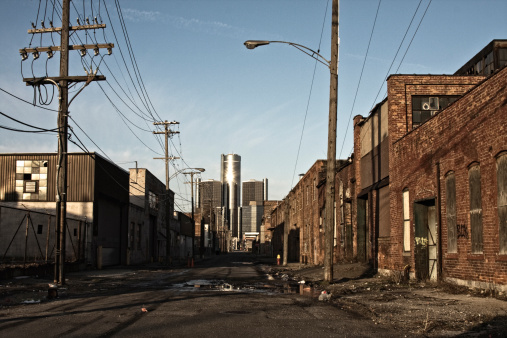The housing market is showing signs of significant recovery. In January, home prices rose 8.1% from the year before — the most since the recession, according to the S&P/Case-Shiller home price composite index. Similarly, housing permits and housing starts have climbed to their highest level since 2008.
While both home and rental prices are up, home prices are up significantly more than rental prices. The question remains, is buying a home still cheaper than renting?
According to Trulia, an online real estate listing service, buying is still the much better deal. Declining mortgage rates continue to lower the price of owning a home even as housing prices have risen. Based on a recent report from Trulia, 24/7 Wall St. reviewed the cities where home ownership costs the least compared to rent.
Click here to see the nine cities where renting makes no sense
According to Jed Kolko, Trulia’s chief economist, nationally the cost to own a home is 44% cheaper than the cost to rent. Renters should expect to pay more, Kolko notes, in part because homeowners take additional risks. Among these risks, homeowners are exposed to unexpected renovation costs, the risk of home price declines and the possibility they may be unable to pay their mortgage if their financial condition changes.
In the nine cities where buying a home is far better than renting, home prices are relatively low because the markets never overbuilt. A majority of the cities did not overbuild because local economies were weak to begin with. Eight of the nine “had fewer jobs at the start of 2013 than they did 10 years earlier,” Kolko explained.
Most of them are found in the Rust Belt, an area characterized by long-term economic stagnation. Kolko told 24/7 Wall St. that many of these cities, including Detroit and Toledo, are manufacturing-heavy and have had long-term economic trouble as manufacturing jobs left the area. And because the areas continue to have weak economic forecasts, home prices remain low.
Because of the general economic hardship, home prices did not increase in these cities as much as in other areas during the housing bubble. As a result, home prices did not decline as much when the bubble burst.
In fact, in five of the cities where buying makes the most sense, including Kansas City and Birmingham, home price declines peak-to-trough were lower than the U.S. overall. These markets had far less overbuilding and speculation than the recession-shaken metropolitan areas in states such as Arizona, Nevada and Florida, according to Kolko.
Most markets with wide gaps between monthly home ownership and rental costs are located in states where the cost of living is low. All nine markets where buying a home makes sense are located in states that have lower costs of living than the nation as a whole, according to the Missouri Economic Research & Information Center. The Memphis metro area is primarily located in Tennessee, which had the nation’s second lowest cost of living in the final quarter of 2012. Indiana, where Gary is located, had the nation’s fifth lowest cost of living.
To identify the nine cities where buying is far less expensive than renting, 24/7 Wall St. relied on data provided by Trulia on the monthly costs of renting and buying a property in the nation’s 100 largest metro areas. Among the factors included in Trulia’s calculations are cost of moving, rent appreciation, inflation and mortgage costs of 20% down payment on a 30-year fixed mortgage at a rate of equal to the national average of 3.5%. Home sales figures from Trulia are for the past winter, which ran from December 2012 through February 2013. In addition, 24/7 Wall St. reviewed employment and unemployment figures from the Bureau of Labor Statistics (BLS). Peak-to-trough home price changes are from the Federal Housing Finance Agency’s House Price Index and are adjusted for regional inflation by the Brookings Institution. Brookings also provided the percentage change in metropolitan area gross domestic product.
These are the nine cities where renting makes no sense.
9. Birmingham, Ala.
> Pct. savings, buying vs. renting: -59%
> Monthly cost of ownership: $504 (5th lowest)
> Monthly cost of rent: $1,232 (18th lowest)
> 10-yr. employment change: -1.0%
Birmingham has the nation’s fifth lowest monthly cost of home ownership at just over $500 a month. The cost of renting, however, is nearly two and half times the monthly cost of ownership. One reason for the low home ownership cost relative to rent cost could be that, last winter, the median home price in Birmingham declined by 7.5% from the year before. This leads to lower monthly mortgage payments and monthly costs for homeowners. Although not located in the Midwest, Birmingham, like many cities in Ohio and Michigan, has suffered for years from the loss of manufacturing jobs and a declining population.
Also Read: Ten Cities Most Optimistic About the Economy
8. Kansas City, Mo.-Kan.
> Pct. savings, buying vs. renting: -60%
> Monthly cost of ownership: $503 (4th lowest)
> Monthly cost of rent: $1,260 (21st lowest)
> 10-yr. employment change: +1.5%
Economic growth in Kansas City has been stagnant in recent years. The Kansas City metro area’s output rose 2.7% from its lowest point during the recession to the current peak, versus an increase of 8.3% across the United States, according to Brookings. Despite the lagging output, the area’s median home sale prices rose 2.7% last winter from the previous year. Homes in Kansas City, however, remain very inexpensive. Owning a home in the area is estimated to cost only about $500 a month on average, one of the lowest figures in the nation.
7. Toledo, Ohio
> Pct. savings, buying vs. renting: -62% (tied for 6th lowest)
> Monthly cost of ownership: $450 (2nd lowest)
> Monthly cost of rent: $1,194 (10th lowest)
> 10-yr. employment change: -6.4%
The average rent on a property in Toledo is less than $1,200 a month, which is among the lowest of any metro area in the United States. Still, home ownership is much cheaper. The estimated monthly cost of home ownership in the city is just $450 a month on average, trailing only Detroit nationwide. Toledo was once home to a large number of manufacturing workers, many of whom lost their jobs due to automation. According to the BLS, Toledo has lost more than 12,000 manufacturing jobs over the 10 years ending in January 2013.
6. Memphis, Tenn.-Miss.-Ark.
> Pct. savings, buying vs. renting: -62% (tied for 6th lowest)
> Monthly cost of ownership: $511 (7th lowest)
> Monthly cost of rent: $1,336 (35th lowest)
> 10-yr. employment change: -1.2%
Memphis has experienced moderate growth in recent years. Although it still trails the country as a whole, the Memphis area’s gross domestic product (GDP) has recovered more from its recession low than more than half of all metro areas examined, rising by 6.8%. Home prices also have risen, with the median sales price in Memphis up more than 15% last winter from a year before. The increase in home prices does not seem to have meaningfully affected the cost of home ownership. The monthly cost of home ownership is 62% cheaper than renting in 2013, versus a 61% discount the year before. Also, owning a home in Memphis is estimated to cost an average of just $511 a month — among the lowest figures in the nation.
Also Read: The Seven States Running Out of Water
5. Warren-Troy-Farmington Hills, Mich.
> Pct. savings, buying vs. renting: -63% (tied for 2nd lowest)
> Monthly cost of ownership: $567 (17th lowest)
> Monthly cost of rent: $1,522 (44th highest)
> 10-yr. employment change: -11.8%
Despite its close proximity to Detroit, renters in the Warren area pay considerably more per month than those who rent in the Motor City. A typical rent in the area costs an estimated $1,522 a month, in the top half of all metro areas surveyed. By comparison, a typical rent in the Detroit area cost just $1,138 per month, the fourth lowest in the country. Owning a home in the area is also considerably cheaper than renting. A typical homeowner saves an estimated $955 per month versus renting — a larger dollar amount than in all but eight metropolitan areas.
4. Gary, Ind.
> Pct. savings, buying vs. renting: -63% (tied for 2nd lowest)
> Monthly cost of ownership: $560 (14th lowest)
> Monthly cost of rent: $1,518 (45th highest)
> 10-yr. employment change: -5.0%
Homeowners in Gary are estimated to save $958 a month by owning rather than renting,the eighth largest dollar difference in the nation. Home ownership costs an estimated $560 a month, among the lowest figures in the nation. In addition to long-term population declines, Gary has lost 5% of its jobs in the past 10 years. Founded by U.S. Steel in 1906, Gary is a shell of the manufacturing sector it was even 10 years ago; the area had 41,000 manufacturing workers in January 2003, versus just 36,300 in January 2013.
Also Read: America’s Most Content (and Miserable) Cities
3. Dayton, Ohio
> Pct. savings, buying vs. renting: -63% (tied for 2nd lowest)
> Monthly cost of ownership: $469 (3rd lowest)
> Monthly cost of rent: $1,278 (28th lowest)
> 10-yr. employment change: -8.0%
Home ownership in Dayton, Ohio, costs just $469 a month — the third lowest figure in the nation. This is despite the fact that home prices fell by just 26.2% peak-to-trough during the recession, a slightly smaller decline than the United States as a whole, at 28.4%. Like many cities in the Rust Belt, Dayton’s manufacturing sector has declined a great deal in recent years. Between January of 2003 and January of 2013, the number of manufacturing jobs in the area declined from more than 64,000 to just slightly more than 40,000.
2. Cleveland, Ohio
> Pct. savings, buying vs. renting: -63% (tied for 2nd lowest)
> Monthly cost of ownership: $541 (12th lowest)
> Monthly cost of rent: $1,462 (48th highest)
> 10-yr. employment change: -6.3%
Cleveland ranks as one of the least expensive places to own a home, at an estimated average of just $541 a month. Despite this, the metro area ranks in the top half of all areas analyzed by Trulia for the cost of renting. The area’s economy has struggled in recent years. Its GDP has risen just 2.7% since bottoming out in the third quarter of 2009, among the lowest recoveries in the nation. Manufacturing, still a major part of Cleveland’s economy, has shed jobs throughout the past decade. Area manufacturing employment fell from more than 157,000 jobs in January 2003 to less than 122,000 jobs in January 2013.
1. Detroit, Mich.
> Pct. savings, buying vs. renting: -70%
> Monthly cost of ownership: $338 (the lowest)
> Monthly cost of rent: $1,138 (4th lowest)
> 10-yr. employment change: -15.1%
Detroit has the lowest cost of home ownership, at just $338 per month. Home prices fell by 46.9% from peak-to-trough in the Detroit metro area during the housing crisis, one of the steepest drops in the country. As of last October, Detroit had the nation’s highest vacancy rate, at more than 12% of area homes. The next highest vacancy rate measured was just below 7%. Problems in the area extend far beyond the housing market. In January, 10.6% of workers were unemployed, among the highest rates in the nation. In order to keep the city solvent, Governor Rick Snyder recently appointed an emergency manager to force it to make deep budget cuts.
Credit card companies are handing out rewards and benefits to win the best customers. A good cash back card can be worth thousands of dollars a year in free money, not to mention other perks like travel, insurance, and access to fancy lounges. See our top picks for the best credit cards today. You won’t want to miss some of these offers.
Flywheel Publishing has partnered with CardRatings for our coverage of credit card products. Flywheel Publishing and CardRatings may receive a commission from card issuers.
Thank you for reading! Have some feedback for us?
Contact the 24/7 Wall St. editorial team.


